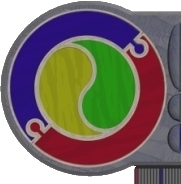 |
|
 |
| |
AI - Timeline
Milestones
Time Line of 'Significant Events' in Artificial Intelligence Research
- 1936
- Alan Turing considers the brain as a way of looking at computing.
- 1943
- Warren McCulloch and Walter Pitts modelled a simple neural network.
- 1947
- Arthur Samuel from IBM began work on a program to play 'Checkers'
that was capable of learning from its mistakes.
- 1950
- Alan Turing (the 'Father of AI') and designer of the first electronic
computer 'Colossus', publishes 'Computing Machinery and Intelligence',
which suggests that machines may someday 'compete with men in all
purely intellectual pursuits'. IBM also begin working on simulated
neural networks
- 1956
- A Summer conference in Hanover, New Hampshire of mathematicians,
neurologists, psychiatrists and electrical engineers. John McCarthy
(a Maths prof.) first proposes the term 'Artificial Intelligence'.
- 1957
- Prediction by Rand Corporation that 'within 10 years a digital
computer will be the worlds chess champion, unless rules ban it
from competition' (still not achieved to date).
- 1958
- LISP (LISt Processing language), the most commonly used AI research
language introduced by John McCarthy. US Defence Department forms
Defence Advanced Research Projects Agency (DARPA) - military applications
for AI to be explored with large injection of funds.
- 1959
- Widrow and Hoff develop 'ADALINE' and 'MADALINE' as the first
neural networks in real life application (they filtered noise and
echoes from phone lines)
- 1961
- Arthur Samuel consistently beaten by his own 'checkers' program
- 1962
- The Perceptron neural network model proposed by Rosenblatt (uses
corrective learning).
- 1963
- 'Eliza', a natural language program by Joseph Weizenbaum of Massachusetts
Institute of Technology used to simulate diagnosis by a psychiatrist
- 1965
- Feigenbaum, Buchanan and Lederberg work on an 'if..then' program
to assist in analysing spectrograph data. The result 'DENDRAL',
is the first expert system.
- 1967
- Grossberg developed the Avalanche series of neural networks which
were able to control robot arms and perform speech recognition.
- 1968
- 'SIR' (Semantic Information Retrieval) - a program that could
make deductions from facts written by Bert Raphael
- 1969
- 'Shakey' - an ambulatory robot debuts at Stanford university -equipped
with range finder, television camera, on-board logic, bump detector
and antennae for radio linkage Minskey and Papert (author of LOGO)
conclude that the Perceptron is unable to solve any useful problems.
- 1970
- 'CASNET' - an expert system for diagnosis and treatment of Glaucoma
- 1971
- 'MACSYMA' - an expert system to perform differential and integral
calculus better than most human experts.
- 1972
- PROLOG is introduced as an artificial intelligence language.
- 1975
- 'MYCIN' - an expert system that could diagnose bacterial infections
on the basis of symptoms (used 400 rules)
- 1976
- 'Hearsay' - a speech understanding program, as part of a five
year project sponsored by DARPA
- 1979
- 'BKG 9.8' - a backgammon program defeats the world champion winning
$US5000 for its author Hans Berliner.
- 1981
- Expert systems 'ONCOCIN' (cancer treatment), 'SAM' (brain haemorrhages
and high blood pressure treatment), 'DART' (computer breakdown support),
'R1' (computer system configuration), 'DIPMETER' (geological layer
analysis) and 'SIMMIAS' (oil prospecting)
- 1982
- DARPA outlines a 20-year plan for AI defence systems on earth
and in space.
- 1985
- 'Q&A' - the first 'natural language' PC database, by Symantec.
- 1988
- 'VoiceReport' - a voice activated computer system capable of dictation
with a 5000 word vocabulary by Kurzweil Applied Intelligence.
- 1989
- 'KBMS' (Knowledge Base Management System), released for the PC
by Artificial Intelligence Corp, allows users to construct expert
systems. Neural networks for Defence meeting (re-focus on the Perceptron)
- 1990
- Targeted as the date for Japans Fifth Generation Project to be
integrated into small businesses and homes, as well as businesses
and corporations - not realised to date.
|
|
|
 |
|
 |
|


